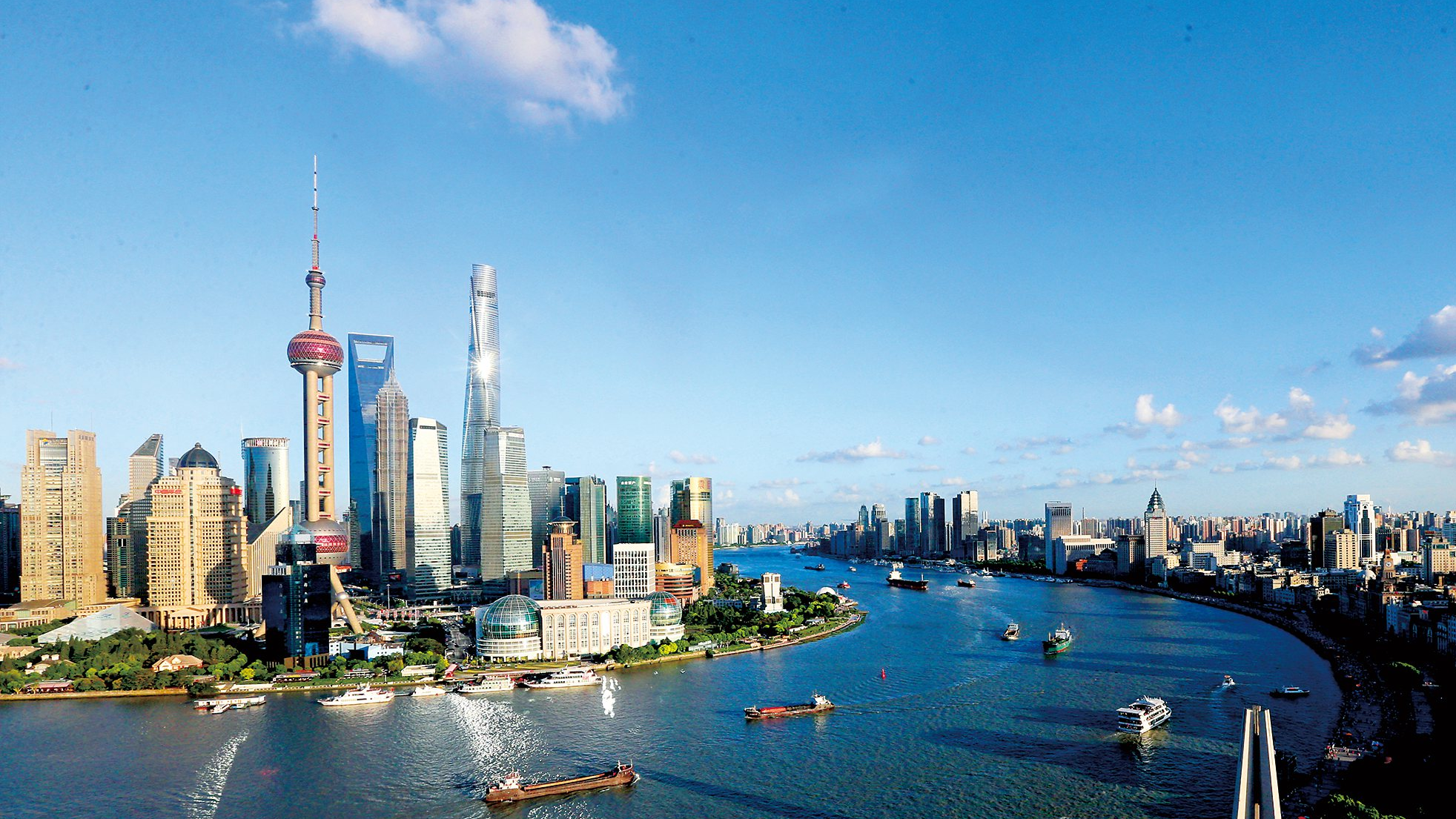
Lujiazui area in Shanghai, China. /Xinhua
Lujiazui area in Shanghai, China. /Xinhua
Editor's Note: Ken Moak, who taught economic theory, public policy and globalization at university level for 33 years, co-authored a book titled "China's Economic Rise and Its Global Impact" in 2015. The article reflects the author's opinion, and not necessarily the views of CGTN.
The Wall Street Journal (WSJ) and other Western media reported on July 12 that China might not be the world's "engine of economic growth" in the post COVID-19 pandemic period, as it did in the 2008 financial crisis.
Their assessment was based on a number of factors (some factual, others speculative), including: COVID-19 hit China harder than the financial crisis; automobile sales are down; debt wariness; all of which could dampen the "V-shape" recovery in the second quarter from the first.
The newspapers also reported that some critics are pointing out that the U.S.-China relationship would continue to sink because of the pandemic, trade war and other conflicts, leading to further disruptions in trade between the world's two largest economies. Being the biggest trade nations and firmly entrenched in the global supply chain, trade conflicts between China and the U.S. would decrease international trade, thus negatively impacting the world economy.
Moreover, surging COVID-19 cases in the U.S., Latin America, India and parts of the world could stifle economic recovery because of continuous business lockdowns, causing more stress for world economies. In this sense, the demand for Chinese imports could decline, thereby causing the Asian giant to reduce demand for natural resources from the mentioned developing economies.
Against these backdrops, the WSJ and other Western media might be right: China might not able to save the world economy as it did in 2008 and 2009. Western economic theory suggests that insufficient or falling domestic consumption and exports, coupled with rising indebtedness would slow down if not sending economic growth on a downward trajectory.
However, China's "socialist market economy" has a different set of rules. Unlike Western neoliberalism, the Chinese government plays an effective role in the economy, implementing timely policies which are crucial in reversing downward economic trends as the 2008 huge stimulus package of over 580 billion U.S. dollars attested.
Moreover, the Chinese government has a huge financial toolkit – over three trillion U.S. dollars of foreign reserves and over 27 trillion U.S. dollars in capital formation (banks deposits) – affording it to mount effective economic recovery programs.
To that end, China's economy could be more resilient and grow faster than Western analysts expected, defying the "gloomy" economic prediction once again.

Consumers wait in line outside the global flagship store of "niko and..." brand in Shanghai, China, December 21, 2019. /Xinhua
Consumers wait in line outside the global flagship store of "niko and..." brand in Shanghai, China, December 21, 2019. /Xinhua
Some analysts such as the UBS's chief China economist Wang Tao indeed, are predicting China's second quarter economic growth would be between two percent and three percent, a "V-shaped" turnaround from the first quarter's 6.8 percent contraction. They opine that the government would put in place policies – expansionary fiscal and monetary – to help the economy recover from the pandemic for the rest of the year if not beyond.
In light of experiences, the Chinese government would likely do just that: spend sufficiently to induce private consumption and help businesses to weather the pandemic. For example, the government has provided financial resources for protecting people's living standards and alleviating poverty. In this way, private consumption would likely increase for the rest of the year and beyond.
On monetary policy, Chinese government has reduced the borrowing cost for small businesses in the first half, and ensured sufficient funds for major infrastructure projects in the second half.
The People's Bank of China has injected additional liquidity into the banking system through reverse repos, the central bank buying securities from commercial banks with the agreement of selling them back at some future date. The process would increase the quantity of loanable funds and lower interest rates which would raise the levels of consumption and investment.
Furthermore, China's remarkable success in controlling the spread of COVID-19 allowed the country to re-open its economy sooner than all major economies. Over 90 percent of manufacturing is already operational and the services sectors – from hospitality to retail trade – are gradually reopening. For those who were unable to find work, the government gave or loaned them money to become street vendors.
With employment on the rise and significant savings, China's population of 1.4 billion could be the engine of economic recovery. This is particularly true with the younger generation. Unlike their parents or grandparents, most of them want to "live for the moment", buying goods and services to increase standard of living. Accounting for over the half of GDP, increases in private consumption would have a positive impact on economic growth
It is perhaps because of China's timely and effective stimulus policies, huge domestic market and successful Belt and Road Initiative (BRI) that prompted the International Monetary Fund (IMF) to project positive economic growth in 2020 and 8.2 percent in 2021. Other economists are even more optimistic, expecting the Chinese economy to grow between two percent and three percent in 2020.
Trade between China and the 60 or so participating BRI countries exceeded seven trillion U.S. dollars in 2019. That number is expected to grow because of more countries are showing interest in joining the initiative. Indeed, two-way between China and the participating countries grew whereas that between the West, the U.S. in particular, and the Asian giant decreased in the first quarter of 2020.
Yes, China would likely be the world's "economic beacon" once again. While not shinning as bright as in the 2008/09 period, the economy would grow faster than other major economies, affording it to buy more imports, particularly from BRI participating and other developing economies.
(If you want to contribute and have specific expertise, please contact us at opinions@cgtn.com.)